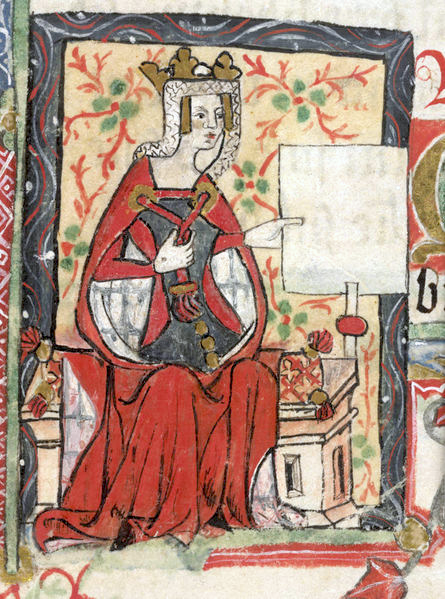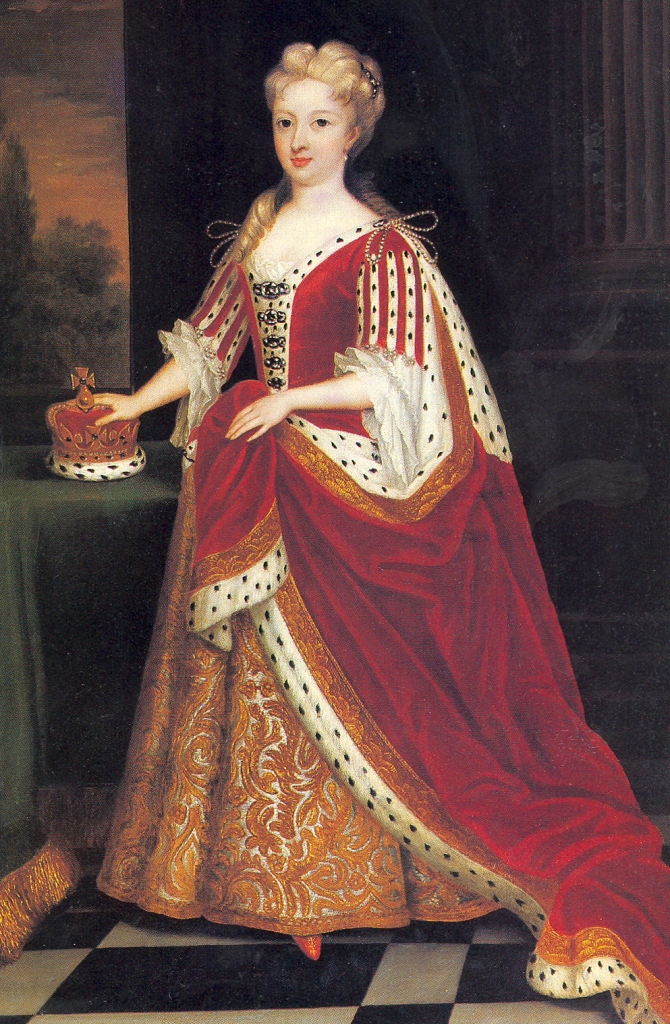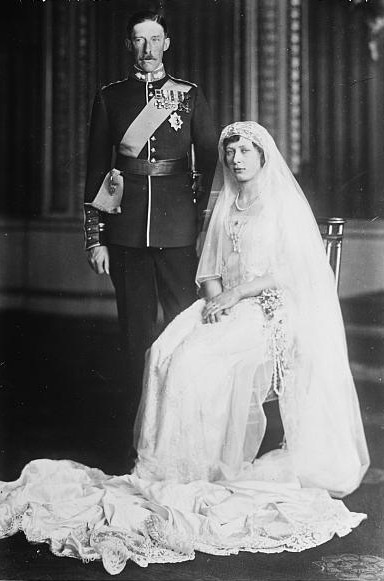© Unofficial Royalty 2024

Nicholas I, Emperor of All Russia; Credit – Wikipedia
March 2, 1316 – Birth of Robert II, King of Scots at Paisley Abbey in Renfrewshire, Scotland
The first monarch of the House of Stewart, Robert II, King of Scots was the only child of Walter Stewart, 6th High Steward of Scotland and Marjorie Bruce, the daughter of Robert I the Bruce, King of Scots. Fortunately, Robert II’s reign was more peaceful than previous reigns. Hostilities with England were renewed in 1378 and went on intermittently for the rest of Robert II’s reign. In 1384, when Robert II became senile, he left the administration of the kingdom to his eldest son John, Earl of Carrick, who succeeded him as Robert III, King of Scots.
Unofficial Royalty: Robert II, King of Scots
March 2, 1619 – Death of Anne of Denmark, Queen of England, wife of King James I of England, at Hampton Court Palace in Richmond, England; buried at Westminster Abbey in London, England
In 1589, Anne married James VI, King of Scots, the son of Mary, Queen of Scots. In 1603, James succeeded to the English throne upon the death of Queen Elizabeth I of England as King James I of England. Anne and James had seven children but only three survived childhood: Henry Frederick, Prince of Wales who died of typhoid fever, aged 18; Elizabeth who married Frederick V, Elector Palatine whose daughter Sophia of Hanover became heiress presumptive to the British throne under the Act of Settlement 1701 (Sophia’s son was King George I) and King Charles I of England who was beheaded during the English Civil War. When Anne’s son Henry Frederick died, it was a great tragedy for Anne and the entire nation. Anne could not bear to have Henry’s death mentioned and people were advised not to give her condolences. After her son’s death, Anne’s health began to deteriorate and she withdrew from social activities. By 1617, Anne’s condition became debilitating. Her surviving son Charles was often with her and was at her bedside when Anne died at the age of 44 from dropsy (edema).
Unofficial Royalty: Anne of Denmark, Queen of England
March 2, 1681 – Death of Isabel Stuart, daughter of King James II of England and his second wife Maria Beatrice of Modena, at St. James’s Palace in London, England; buried at Westminster Abbey in London, England in the vault of her great-great-grandmother Mary, Queen of Scots
For most of her short life, Isabel was her parents’ only child and was fourth in line to the throne behind her father and her elder half-sisters Mary and Anne from her father’s first marriage. She moved down a place in the line of succession when her brother Charles Stuart, Duke of Cambridge was born in 1677. However, he lived for only one month, dying from smallpox. In 1678, Isabel was joined by another sister, Elizabeth, who was also short-lived. Isabel died on March 2, 1681, five months before her fifth birthday, at St. James’s Palace in London while her parents were still in Scotland. Her father regretted that he “could not have the satisfaction of seeing and assisting her in her sickness.”
Unofficial Royalty: Isabel Stuart
March 2, 1835 – Death of Franz I, Emperor of Austria in Vienna, Austria; buried at the Imperial Crypt in Vienna, Austria
Franz was the son of Pietro Leopoldo I, Grand Duke of Tuscany (later Leopold II, Holy Roman Emperor) and Infanta Maria Luisa of Spain. Franz’s paternal grandparents were the formidable and powerful Empress Maria Theresa, who was in her own right Archduchess of Austria, Queen of Hungary, Queen of Croatia, and Queen of Bohemia, and Francis Stephen, Holy Roman Emperor, Grand Duke of Tuscany, and Duke of Lorraine. Even though her husband was the nominal Holy Roman Emperor, Maria Theresa wielded the real power. Franz married four times but only his second wife Maria Theresa of Naples and Sicily had children – a total of twelve children, before dying in childbirth. Upon the death of his father in 1794, Franz became Franz II, Holy Roman Emperor. During the Napoleonic Wars of the early 19th-century, Holy Roman Emperor Franz II feared that Napoleon could take over the personal, hereditary Habsburg lands within the Holy Roman Empire, so in 1804 he proclaimed himself Emperor Franz I of Austria. As it turned out, Franz’s move was a wise one because the Holy Roman Empire was dissolved in 1806.
Unofficial Royalty: Franz I, Emperor of Austria
March 2, 1843 – Birth of Maria Clotilde of Savoy, Princess Napoleon, daughter of King Vittorio Emanuele II of Italy, at the Royal Palace of Turin in Savoy, now part of Italy
Full name: Ludovica Teresa Maria Clotilde
Maria Clotilde married Napoléon-Jérôme Bonaparte, son of Jérôme Bonaparte, the brother of Emperor Napoleon I, and Princess Catherine of Württemberg. Maria Clotilde was fifteen and Napoléon-Jérôme was 37. Maria Clotilde was not impressed by her portly, anti-clerical liberal fiancé. Her innocence, piety, and sense of duty clashed with Napoléon-Jérôme’s love of wine, women, and food. Several years after the fall of the Second French Empire in 1870, Maria Clotilde and her husband quietly separated and she returned to Turin, Italy with her daughter. Maria Clotilde continued her life of devotion and charity after her return to Italy. She spent her final years at the traditional summer residence of the Savoy family, the Castle of Moncalieri in Montcalieri, a town located just outside of Turin.
Unofficial Royalty: Maria Clotilde of Savoy, Princess Napoleon
March 2, 1854 – Death of Sir John Conroy, 1st Baronet of Llanbrynmair, Equerry to Queen Victoria’s father The Duke of Kent and Comptroller and Private Secretary to Queen Victoria’s mother The Duchess of Kent, at his home Arborfield Hall, near Reading, Berkshire, England
Conroy was a confidant and political agent to Victoria’s mother The Duchess of Kent. Together, they designed the Kensington System, an elaborate and strict system of rules for the upbringing of young Victoria, designed to make her dependent upon them in the hope of allowing them one day to wield power through her. Princess Victoria grew to hate Conroy, thanks to the oppressive system, and he was also unpopular among the rest of the British royal family. When Victoria became Queen, she immediately dismissed Conroy from her household but she could not dismiss him from her mother’s household. However, she sent both her mother and Conroy off to a distant wing of the palace and cut off personal contact with them. After Conroy’s death, the Duchess of Kent finally agreed to have her financial accounts audited and acknowledged that significant funds were missing. She admitted that Conroy had swindled her and at the same time hurt her relationship with her daughter for his own benefit.
Unofficial Royalty: Sir John Conroy, 1st Baronet of Llanbrynmair, Comptroller and Private Secretary to Queen Victoria’s mother The Duchess of Kent
March 2, 1855 – Death of Nicholas I, Emperor of All Russia in Taganrog, Russia; buried at the Peter and Paul Cathedral in St. Petersburg, Russia
Nicholas I, Emperor of All Russia was the third of the four sons and the ninth of the ten children of Paul I, Emperor of All Russia. Because he had two, much older brothers, he was not expected to become Emperor. Nicholas’ eldest brother Alexander I, Emperor of All Russia had no surviving children and so the second brother Grand Duke Constantine Pavlovich was the heir to the throne. Grand Duke Constantine morganatically married Joanna Grudzińska. However, for Alexander I to give his approval to the marriage, Constantine was required to forfeit his rights to the Russian throne in favor of his younger brother Nicholas. Nicholas married Charlotte of Prussia (Alexandra Feodorovna), had ten children including Alexander II, Emperor of All Russia. In 1855, Nicholas caught a chill, refused medical treatment, and developed pneumonia. Knowing he was dying, Nicholas retained his composure and said goodbye to his children and grandchildren. He blessed them and reminded them that they should remain friendly with each other. In the early afternoon of March 2, 1855, Nicholas I, Emperor of All Russia died at the age of 58 at the Winter Palace.
Unofficial Royalty: Nicholas I, Emperor of All Russia
March 2, 1916 – Death of Elisabeth of Wied, Queen of Romania, wife of King Carol I of Romania; buried beside her husband at the Cathedral of the Curtea de Argeş Monastery in Romania
In 1869, Elisabeth married Prince Carol I, born Prince Karl of Hohenzollern-Sigmaringen, who had been elected Ruling Prince of the United Principalities of Romania. They had one daughter, Maria, born in September 1870. Maria died of scarlet fever in 1874, and Elisabeth never fully recovered from the loss of her only child. In 1881, the Romanian parliament declared Romania a Kingdom, and Elisabeth’s husband became King Carol I. A patron of the arts, Elisabeth often hosted writers, composers, and musicians, and helped promote their works. Her true passion was writing. Under the pseudonym Carmen Sylva, she wrote hundreds of poems, plays, novels, short stories, and essays, and thanks to her fluency in several languages, published numerous translations of other works.
Unofficial Royalty: Elisabeth of Wied, Queen of Romania
March 2, 2016 – Birth of Prince Oscar of Sweden, Duke of Skåne, son of Crown Princess Victoria of Sweden, at Karolinska Hospital in Solna, Sweden
Full name: Oscar Carl Olof
Prince Oscar’s elder sister Princess Estelle is second in the line of succession to the Swedish throne after her mother Crown Princess Victoria. In 1979, the Riksdag, the Swedish legislature, introduced an Act of Succession that changed the succession to absolute primogeniture, meaning that the eldest child of the monarch, regardless of gender, is first in the line of succession. This Act of Succession became law on January 1, 1980. The previous 1810 Act of Succession allowed only males to inherit the throne. Even after the birth of her brother Prince Oscar, Princess Estelle retains her place in the line of succession as the eldest child of Crown Princess Victoria who is the eldest child and the heir of King Carl XVI Gustaf.
Unofficial Royalty: Prince Oscar of Sweden
This article is the intellectual property of Unofficial Royalty and is NOT TO BE COPIED, EDITED, OR POSTED IN ANY FORM ON ANOTHER WEBSITE under any circumstances. It is permissible to use a link that directs to Unofficial Royalty.
















